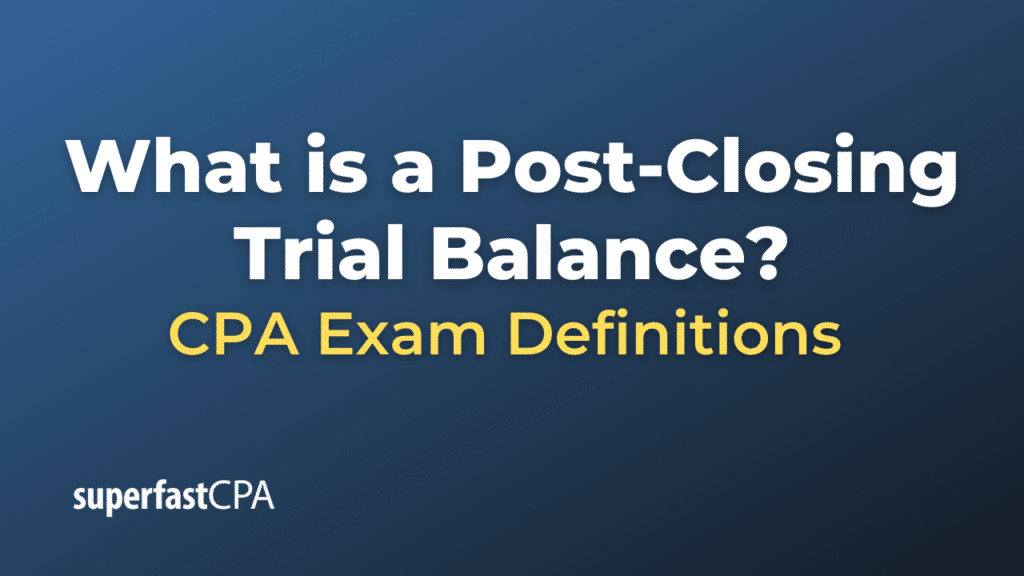Post-Closing Trial Balance
A post-closing trial balance is a list of all the balance sheet accounts and their balances after the closing entries have been made at the end of an accounting period. It is prepared after all adjusting and closing entries have been posted to the general ledger.
The post-closing trial balance should only include balance sheet accounts because all income statement accounts have been closed and their balances should be zero. The main purpose of the post-closing trial balance is to ensure that the total of all debit balances equals the total of all credit balances, which should always be the case in a double-entry accounting system.
By comparing the post-closing trial balance with the adjusted trial balance prepared before the closing entries, you can see how the closing process transferred the results of operations (net income or loss) into retained earnings.
Example of a Post-Closing Trial Balance
Let’s imagine a company called “XYZ Traders.” Here’s how the post-closing trial balance could look like for them after closing entries at the end of the fiscal year:
| Account Title | Debit ($) | Credit ($) |
|---|---|---|
| Cash | 15,000 | |
| Accounts Receivable | 7,000 | |
| Prepaid Rent | 1,000 | |
| Equipment | 30,000 | |
| Accumulated Depreciation – Equipment | 10,000 | |
| Accounts Payable | 3,000 | |
| Salary Payable | 2,000 | |
| Unearned Service Revenue | 1,000 | |
| Capital Stock | 20,000 |
| Retained Earnings | 17,000 | |
|---|---|---|
| Total | 53,000 | 53,000 |
This post-closing trial balance shows only balance sheet accounts, as all income statement accounts have been closed to the Retained Earnings account. Also, the total debits equal the total credits, showing the accounting equation (Assets = Liabilities + Equity) is in balance after all closing entries.













